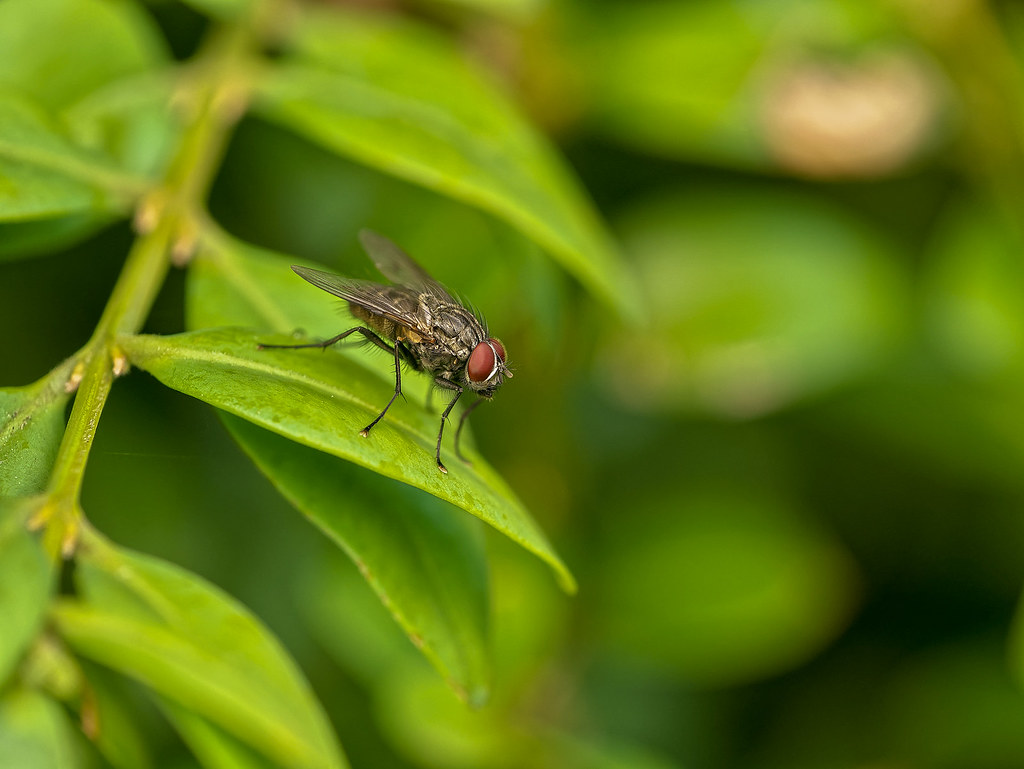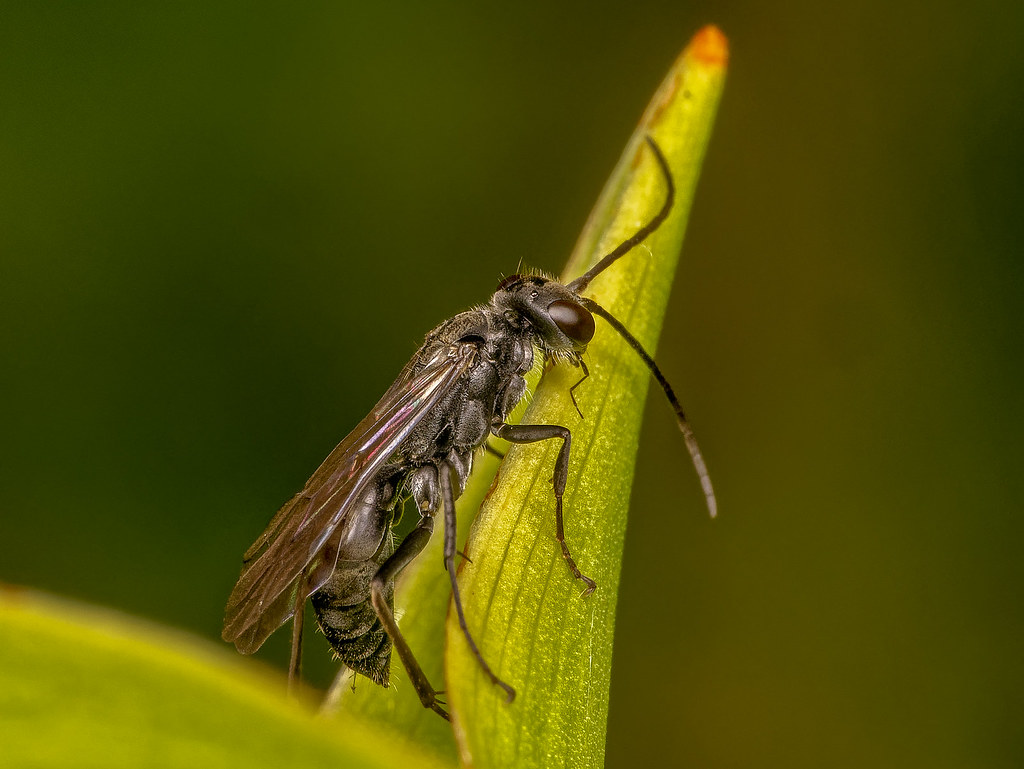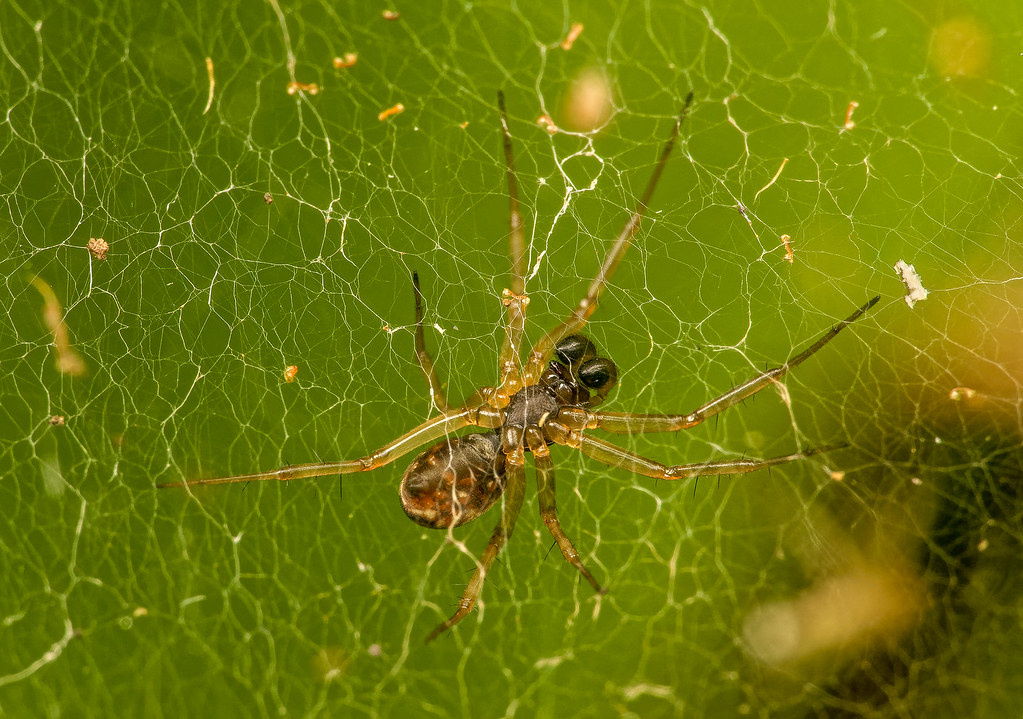GardenersHelper
In Memoriam
- Messages
- 6,344
- Name
- Nick
- Edit My Images
- Yes
I captured these hand-held yesterday in our garden with (as an experiment) two Marumi 330 close-up lenses stacked on a 45-175 on a Panasonic G80 with Venus Optics KX800 twin flash. The Marumi 330 is +3 diopters, so a pair of them gives +6 diopters, in between the power of a Raynox 150 (+4.8) and a Raynox 250 (+8).
I used autofocus as usual for the fly and the wasp. Unusually, for the spider I used fixed focus and moved the camera (almost vertically in this case) as autofocus tends to pick up on the web rather than the spider when the spider is on the opposite side of the web. The fly and the spider were stationary. I was (trying to) track the wasp as it scuttled around continually, in and out of sight going from leaf to leaf. I find autofocus especially useful for moving subjects like this.
From #3 onwards all used minimum aperture of f/22, which is what I generally use for invertebrates. Since the subject was small in the frame the first two could use larger apertures of f/4 and f/5.6 to help isolate the subject from the background while keeping the near side of the subject in focus.
The raw files were batch processed in DXO PhotoLab, Silkypix Developer Pro and Lightroom, with image-specific adjustments in Lightroom. There are 1400 pixel high versions in this album at Flickr.
#1

1367 01 2018_08_25 P1130321_DxO RAW SP7 LR7 1400h by gardenersassistant, on Flickr
#2

1367 02 2018_08_25 P1130318_DxO RAW SP7 LR7 1400h by gardenersassistant, on Flickr
#3

1367 03 2018_08_25 P1130287_DxO RAW SP7 LR7 1400h by gardenersassistant, on Flickr
#4

1367 04 2018_08_25 P1130339_DxO RAW SP7 LR7 1400h by gardenersassistant, on Flickr
#5

1367 05 2018_08_25 P1130324_DxO RAW SP7 LR7 1400h by gardenersassistant, on Flickr
#6

1367 06 2018_08_25 P1130325_DxO RAW SP7 LR7 1400h by gardenersassistant, on Flickr
#7

1367 07 2018_08_25 P1130337_DxO RAW SP7 LR7 1400h by gardenersassistant, on Flickr
#8

1367 08 2018_08_25 P1130399_DxO RAW SP7 LR7 1400h by gardenersassistant, on Flickr
I used autofocus as usual for the fly and the wasp. Unusually, for the spider I used fixed focus and moved the camera (almost vertically in this case) as autofocus tends to pick up on the web rather than the spider when the spider is on the opposite side of the web. The fly and the spider were stationary. I was (trying to) track the wasp as it scuttled around continually, in and out of sight going from leaf to leaf. I find autofocus especially useful for moving subjects like this.
From #3 onwards all used minimum aperture of f/22, which is what I generally use for invertebrates. Since the subject was small in the frame the first two could use larger apertures of f/4 and f/5.6 to help isolate the subject from the background while keeping the near side of the subject in focus.
The raw files were batch processed in DXO PhotoLab, Silkypix Developer Pro and Lightroom, with image-specific adjustments in Lightroom. There are 1400 pixel high versions in this album at Flickr.
#1

1367 01 2018_08_25 P1130321_DxO RAW SP7 LR7 1400h by gardenersassistant, on Flickr
#2

1367 02 2018_08_25 P1130318_DxO RAW SP7 LR7 1400h by gardenersassistant, on Flickr
#3

1367 03 2018_08_25 P1130287_DxO RAW SP7 LR7 1400h by gardenersassistant, on Flickr
#4

1367 04 2018_08_25 P1130339_DxO RAW SP7 LR7 1400h by gardenersassistant, on Flickr
#5

1367 05 2018_08_25 P1130324_DxO RAW SP7 LR7 1400h by gardenersassistant, on Flickr
#6

1367 06 2018_08_25 P1130325_DxO RAW SP7 LR7 1400h by gardenersassistant, on Flickr
#7

1367 07 2018_08_25 P1130337_DxO RAW SP7 LR7 1400h by gardenersassistant, on Flickr
#8

1367 08 2018_08_25 P1130399_DxO RAW SP7 LR7 1400h by gardenersassistant, on Flickr



